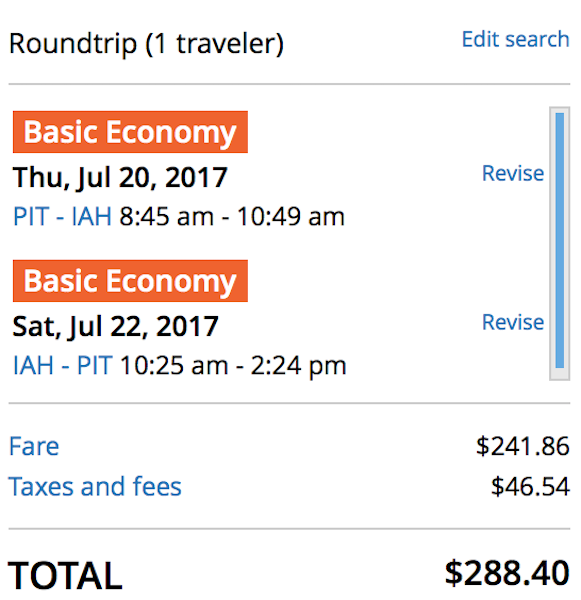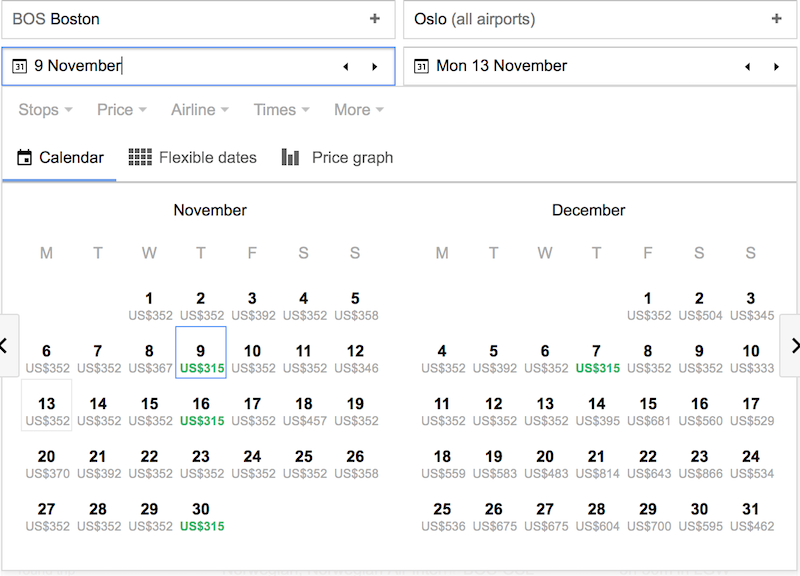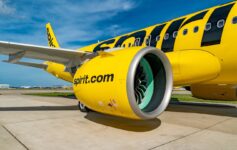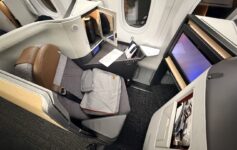Southwest was not only the perennial discount airline, but their mere presence in a new city could lower flight prices across the departure board from all airlines. It seems, however, that their position has been replaced by Spirit and other carriers. Is it no longer the “Southwest Effect” but perhaps the “Spirt Effect”?
If you are considering booking travel or signing up for a new credit card please click here. Both support LiveAndLetsFly.com.
If you haven’t followed us on Facebook or Instagram, add us today.
History of the Southwest Effect
Long before every city in America had Southwest service (or almost every city anyway), Southwest was welcomed to many cities with wide-open arms. Why? Because fares in those cities typically dropped significantly on routes served by Southwest where competition was present.
I lived in Omaha, NE for many years and when Southwest began service to cities like St. Louis, Chicago, and Denver, fares on TWA (at the time), American and United dropped to meet the Southwest prices and hold their market share on O&D customers (origin and destination – customers not connecting onward). Cities like Omaha, Kansas City, and now St. Louis, and San Antonio had very high fares and limited options. Many still do.
While it’s outlined in the book, Nuts, by founder and longtime president Herb Kelleher – a great book if you get the chance to pick it up – it’s not really that way anymore.
It’s Not The Southwest Effect Anymore
Southwest no longer has this effect for a few reasons. First, they are no longer the cheapest. According to market research, Southwest was more expensive than the competition 60% of the time and the same price as the competition 5% of the time. While they were once the home of low fares, the reality of today’s Southwest is a carrier that is at least as expensive if not more expensive than other carriers on the same route 65% of the time.
Secondly, Southwest has saturated most of the markets they serve and already reach most cities in the US. While they don’t fly to Essential Air Service cities like Sioux City, IA (airport code: SUX), they are pretty much everywhere else including primary airports like Atlanta, Boston, and New York LaGuardia. It’s hard to have the same effect on prices when you already serve the airport.
Even new city services don’t offer the benefit of the Southwest Effect any more. Southwest’s costs are just higher. They now offer more of a hub and spoke operation rather than point-to-point service which costs more. They fly planes longer distances (offering cross-country flights) and fly into expensive airports.
Is It The Spirit Effect? Kind of
Southwest was an LCC (low cost carrier) – not because their prices are low but because their operating expenses are. Those low costs were linked to great fuel hedging, as well as flying into secondary airports like the formerly all-but-abandoned Houston Hobby or Chicago Midway.
But LCC is not good enough anymore. RyanAir took the Southwest model to the extreme and started charging for every little thing creating a new category, ULCC (ultra low-cost carrier). Enter: Spirit Air. Spirit and Allegiant followed the same secondary airport market in the US using RyanAir’s model which was not only to charge for everything other than the seat, but also picking destinations. Michael O’Leary, RyanAir’s long time CEO, stated that people with fly from nowhere to somewhere but not from nowhere to nowhere. Meaning, passengers will fly from Grand Island, NE to Las Vegas, but won’t fly from Grand Island to Reno.
Spirit has amended that model by flying into the large airports and taking huge airlines head on. Spirit even flies hub-to-hub routes like Chicago to Dallas, Minneapolis to Atlanta, Los Angeles to Houston. The good news for some travelers is that it is working to lower fares in the same way that Southwest used to.
Spirit recently moved from LaTrobe, PA to nearby Pittsburgh International Airport. Some of their routes were the same as before, others challenged large-scale business markets. Pittsburgh to Los Angeles was flown solely by United until Spirit and Southwest recently challenged, but that’s still flying from nowhere to somewhere, at least in relative terms. What about a business-only example with no tourism or leisure element to offset the shortfalls in business traffic? Pittsburgh to Houston, newly opened, is just such a route.
I fly this route often, sometimes on American with a connection, and sometimes utilizing direct flights on Southwest or United. However, prices have been high, really, really high. On weekdays prices between the two cities routinely runs between $450-700 roundtrip for the two-hour flight. That’s more expensive than Cancun, Los Angeles, even Barcelona out of Pittsburgh. But Spirit has had their effect. Look at prices between Pittsburgh and Houston even as short as the next day.

Those flight prices are clearly all on Spirit, but for the, now, Spirit Effect to take hold the price of other airlines have to come down. As you can see below, the prices for even mainline carriers have come down too! Not just on connection flights like American was offering, but nearly every United direct flight come in hundreds less than before.

Of course for the United flights those are Basic Economy. Those flights are matching the service offering of Spirit at a $100 premium without any of the benefits. Maybe Mr. Kirby can explain why he thinks anyone would anyone choose United Basic Economy when they can get the same limited, charge-me-for-everything service but at a premium of almost double the price. Until he does, this perplexing service is offered, and his old friends at American come in cheaper with a connection and without the Basic Economy restrictions.

Despite United’s Basic Economy offering, for a little more money you get an economy fare without the hassles and with all of the benefits for 33% less than they offered before. Truly, however, United was nearly always in the $550-750 price category for their directs between these two industrial cities, so the Spirit Effect is almost certainly in effect.
What About Wow/Norwegian/Hainan
In the same vein of domestic markets with Spirit and Allegiant, WOW Air, Norwegian Air Shuttle and Hainan have more or less done the same for international markets. I mentioned earlier that flights to Barcelona from Pittsburgh would run $1300-1500 roundtrip. Now, on Delta direct to Paris and then connecting on to Barcelona roundtrips can be had for less than $700.
Other markets have seen this too. Boston, Los Angeles, and DC have been pressured by Norwegian and offered cheap flights to Oslo and Copenhagen matched by the biggest carriers in the world.

Norwegian has been pushing around traditional heavies like British Airways, Delta, United and Lufthansa for the last few years – and winning.
WOW Air is doing the same but in different markets and with more of an Emirates model of using their hub as a connection point conveniently on the way to somewhere else. Most flights from the US to Europe fly over Iceland anyway so connecting in Reykjavik en route doesn’t cost travelers much time but opens up smaller markets to Europe.
Hainan is smaller Chinese carrier that flies mostly from secondary Chinese cities to secondary US cities like Las Vegas for example. This lowers fares between the US and China in a broad sense as well.
Is This Good For Travelers?
For most travelers this is excellent news. Fares are lowered between traditionally expensive markets, making it cheaper for everyone to get moving. For those like myself who simply could not stomach to pay more for a short weekday flight than they could to Europe for the weekend, there is a resoundingly welcome cheer for this new competition.
Some travelers though will unwittingly book fares that do not match their expectations. Those who book away from Spirit because they know that everything will incur a charge may run into United’s waiting arms only to find a higher price for the same issues.
For most, however, this makes travel possible for some, reasonable for others. Europe is simply out of reach for those who are not in the know. While most of our readers here at Live And Let’s Fly will know about cheap fares into competitive markets, we all have friends that thought Europe was a trip they would take… someday. Now that someday can be today, tomorrow, during spring break. The same could be said for domestic trips to Disneyland, flights to the beach for the same cost as gas to an upstate lodge.
Where to Go From Here
The only reason why the major carriers continue to get away with charging high rates for short flights is because ULCCs have not yet had a chance to truly expand in the US market. RyanAir has saturated Europe and like Southwest has turned their focus to business travelers and expanded into larger markets like Barcelona instead of Girona (45 minutes away).
WOW Air and Norwegian Air Shuttle are growing slowly and carefully, testing new markets and possibilities all the time, but to truly impact the trans-Atlantic market they will simply need more flights and more coverage. They will need to fend off the Bigs aggressively like the ULCC spin-off Level from IAG (owner of British Airways, Aer Lingus, Vueling and Iberia). They will need to continue to expand their markets like Norwegian’s new services from Rome to the US as well as London to Austin and Chicago. WOW Air should focus on the markets where they can grow with A321s like Buffalo, Detroit, Milwaukee, and Cleveland.
Spirit has plenty of room to grow by focusing on mid-major markets and competing against heavy business markets that lack competition. While we are on the subject of Pittsburgh, Philadelphia is a $600 roundtrip and so is Charlotte – those are places to start shaking things up. Later, like Southwest, the carrier can bring markets in their extensive Latin America to cities without service.
In the end, I welcome the Spirit effect in all of its forms. Whether the livery is purple (WOW), red (Norwegian), black and neon yellow (Spirit) or blue (Allegiant), bring on the lower fares and liberate price-dependent customers and captive business travelers from obscene pricing.
Have you seen a similar effect in your market?



I am truly surprised Spirit hasn’t moved into Austin, TX.
Airfares are outrageous most of the time!
DL, UA, AA, WN have monopolies over many routes and charge exorbitant fares as they face little competition.
@Saianel – It’s probably ripe for the picking. I know that Spirit is focusing on leisure markets for the most part (as Southwest did initially) but I see short expensive routes that Spirit could easily challenge. For example, Pittsburgh – Boston (up until Delta announced twice daily flights last week) was more expensive on JetBlue than Pittsburgh – Fort Lauderdale on the same airline for a distance considerably longer. Pittsburgh – LGA/JFK is routinely $400-800, Pittsburgh – Philadelphia (which does see significant traffic to avoid the 5-6 hour drive) $400-600 all day long.
I assume the same is true in Austin and I agree that Spirit should enter and challenge.
“The only reason why the major carriers continue to get away with charging high rates for short flights is because ULCCs have not yet had a chance to truly expand in the US market.”
Well, that and because enough people continue to make irrational purchasing decisions on the basis of loyalty. 🙂
Dallas-Ft. Worth is probably THE poster child for what happens when LCC competition takes hold. 15 years ago, it was actually worth it to drive to Houston because flights there were often much cheaper. In 2005, old school Southwest gained the ability to through-ticket from DAL, and prices dropped considerably out of DFW. Then NK came along, along with VX, and now the fortress hub has a reputation as a “challenging” market because of price competition. I’m not complaining, seeing as I can now routinely fly to LA for less than $200 roundtrip. International is somewhat different. Europe is still expensive from here, but India/SE Asia now frequently clocks in at less than $1,000 thanks to the ME3. I’ll take it.
From what I’ve noticed, the Allegiant effect doesn’t really exist, simply because of the lack of frequency between most of their services cities. As an example, they fly IDA to LAS 2-3x weekly, with fares less than $100 round trip, however DL flights on the same route with a connection on the same days still routinely run around $500-700. I think G4 would have to increase their frequency to have the same effect.
@Joseph – You’re correct, they would have to increase frequency and perhaps more importantly, reliability. The last two people I have known to fly Allegiant were both delayed due to mechanical issues, one by an entire day, another by more than eight hours.
Idaho Falls would be a tough market to get flights cheaper though. During the year December 2015 to November 2016 the busiest route was Salt Lake City (Delta as you mentioned) with 67,000 passengers followed by United at 39,000 pax, then 38,000 on four Allegiant routes combined. There simply is not enough volume to fill airplanes so it will be tough to attract airline routes that lower fares.
It obviously depends on the route but I’m seeing both effects if you look far enough out. I’ve see more than a few times where 11 months out the legacy carriers will offer say a $350 ticket. Then when Southwest schedule opens this will quickly drop to say $250 and then later when the shorter Spirit schedule opens it will drop to say $180. This is especially true for airports where they all compete like FLL
@DaninMCI – I couldn’t disagree with that anecdotally, though I would say that the effect is much smaller than it used to be. I couldn’t find the figure by the time it published (and I am still looking) but the drop was 40% into a new market about 15 years ago. That role is now Spirit (as you evidenced above) and Southwest may still drop it slightly but not what it once did. This article from January of 2017 in USA Today suggests that fares drop just 12% (https://usat.ly/2t5n1VF). This report from Bentley University has chronicled this claim by demonstrating that in 2009-2010 Southwest’s entrance would drop market fares by 24% (http://bit.ly/2ut1sSC) meaning that in the last six years their advantage has halved.
A discount airline can only remain so as long as operating costs are low. With the current pilot shortage and steep FAA requirements (experience, time, and money) to obtain an Airline Transport Pilot license, Spirit will only be a discount carrier for so long before their employees insist on being equally compensated as their peers at other airlines. Remember, you often get what you pay for.. or don’t pay for.. think aircrew experience, and quality maintenance. Enjoy your discounted fairs! Happy flying!
@Brad – I would have to counter that for a few reasons. First, while I don’t dispute the FAA requirements are high, those are in place now, so independently that shouldn’t be a factor. Second, the pilot shortage is real, and you may be right, but a rising tide lifts all ships, so it won’t take Spirit away from being the discounter, it will just make the fares generally higher but won’t necessarily cut the disparity between carriers. Those pilot shortages will likely affect the bigger carriers first (as it already has with Alaska) as they will have to make wholesale changes that affect all pilots in their substantially larger airlines. That being said, Southwest was able to avoid unions for 40 years and if we have 30 more years of Spirit keeping prices low and other carriers honest, then I don’t see that as a bad thing, the same way Southwest did for so many years. Further, RyanAir in Europe has avoided unions and I don’t see that changing. I would suggest that the European culture is just as conducive (if not more so) to unionized labor so I am not sure that the model of inevitable unions is accurate. I would also agree with you on the note of maintenance and experience, Allegiant is paying that price all over their system and it’s one reason (pure conjecture) that I don’t believe in an “Allegiant Effect”. Spirit operates newer planes instead of picking up Delta’s 30 year-old leftovers and that makes them difference. It gives them the same benefit of RyanAir with a similar model.
I wholeheartedly agree that you get what you pay for. But the point of the post, and perhaps I didn’t make this clear, is that their entry to the market is lowering fares on airlines I actually want to fly that deliver superior service and offer me elite perks. I welcome them into the Pittsburgh market with open arms purely because they were able to get Houston flights from $450-700 roundtrip down to $250s for non-basic economy legacy fares. I will enjoy the discounted fares… on American and United because though the discount is not as low as what I could pay for Spirit, the lowered fares are still saving me hundreds over what I used to pay. That’s a real benefit for me even as a legacy carrier customer.